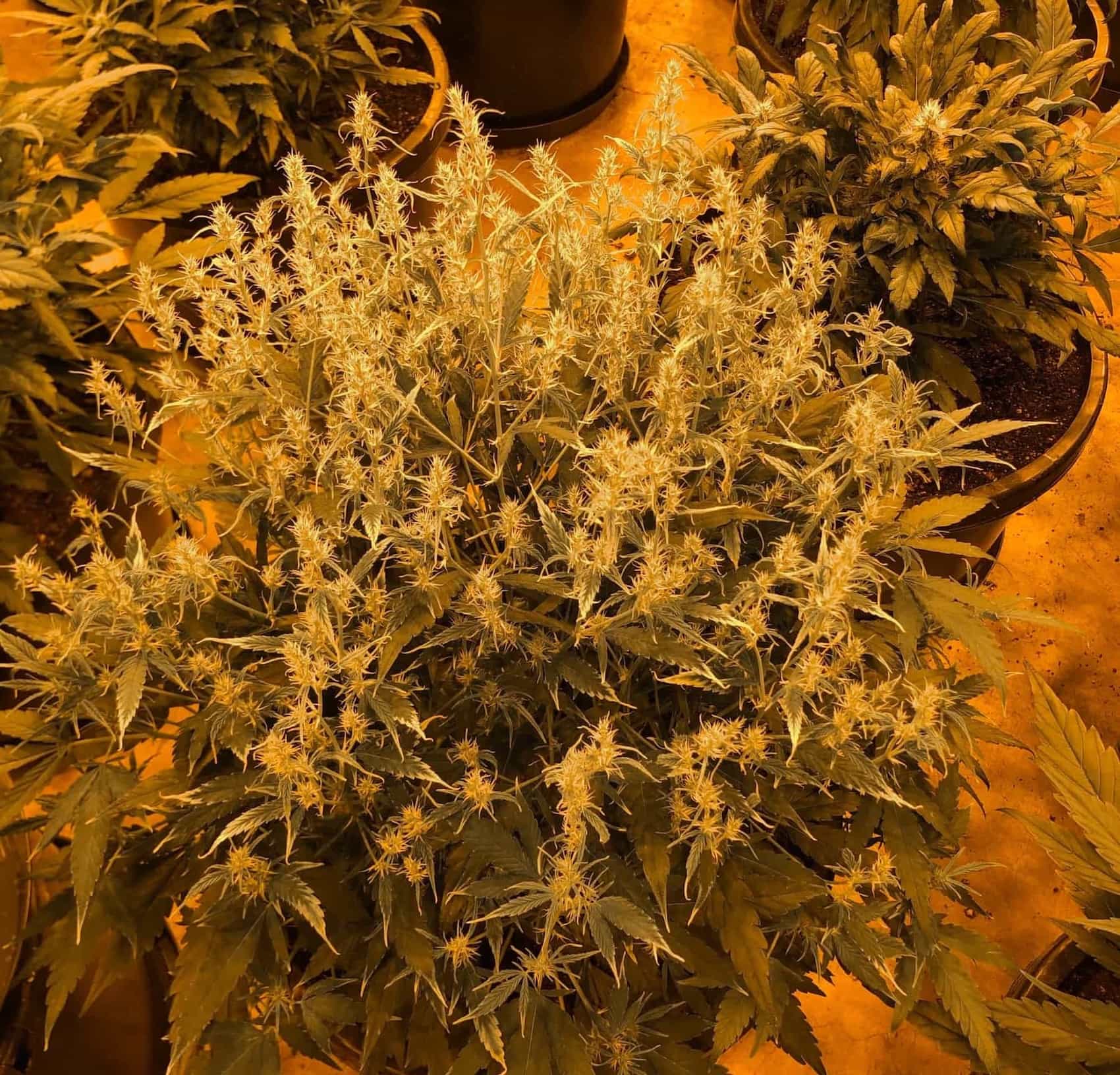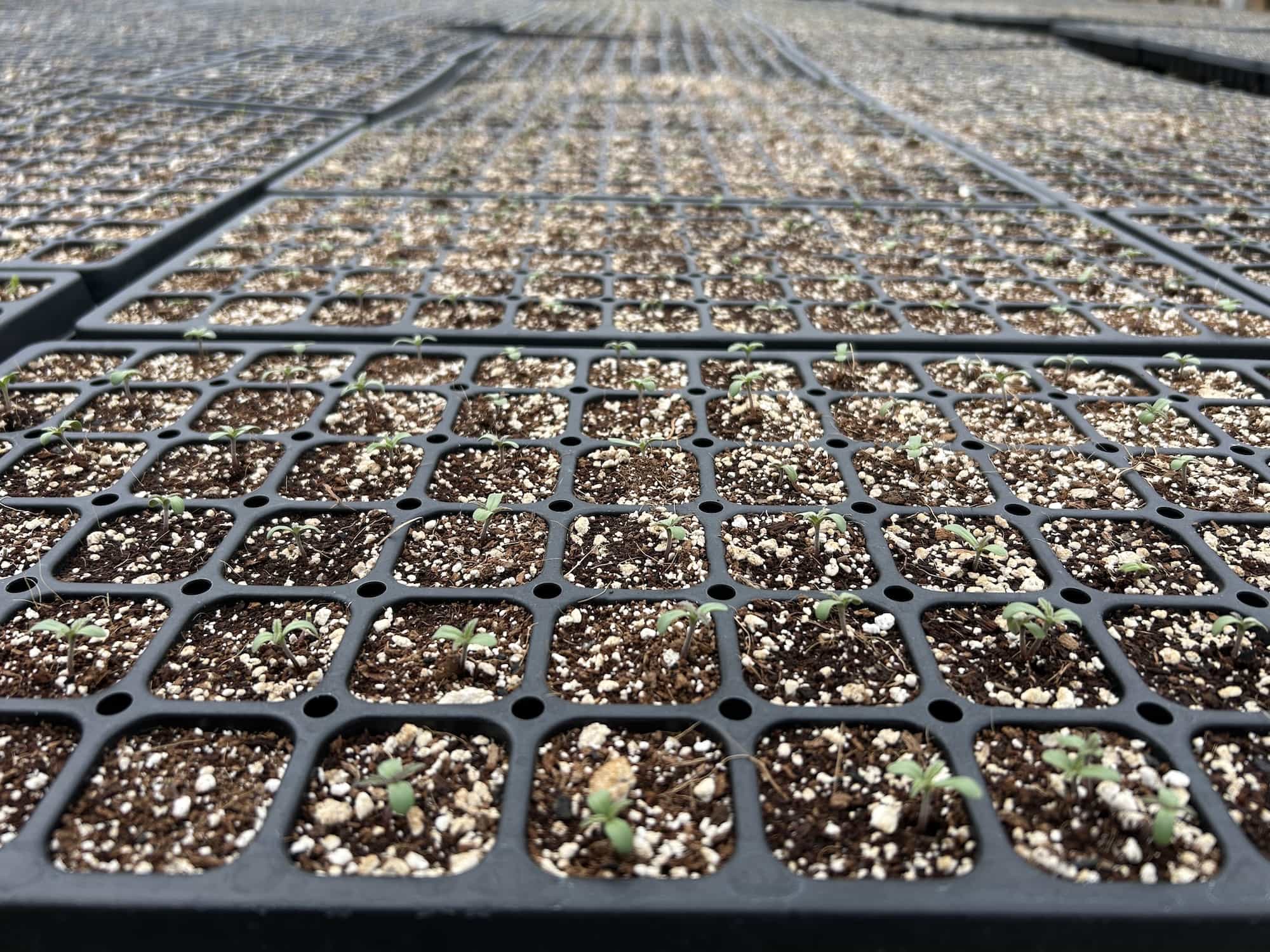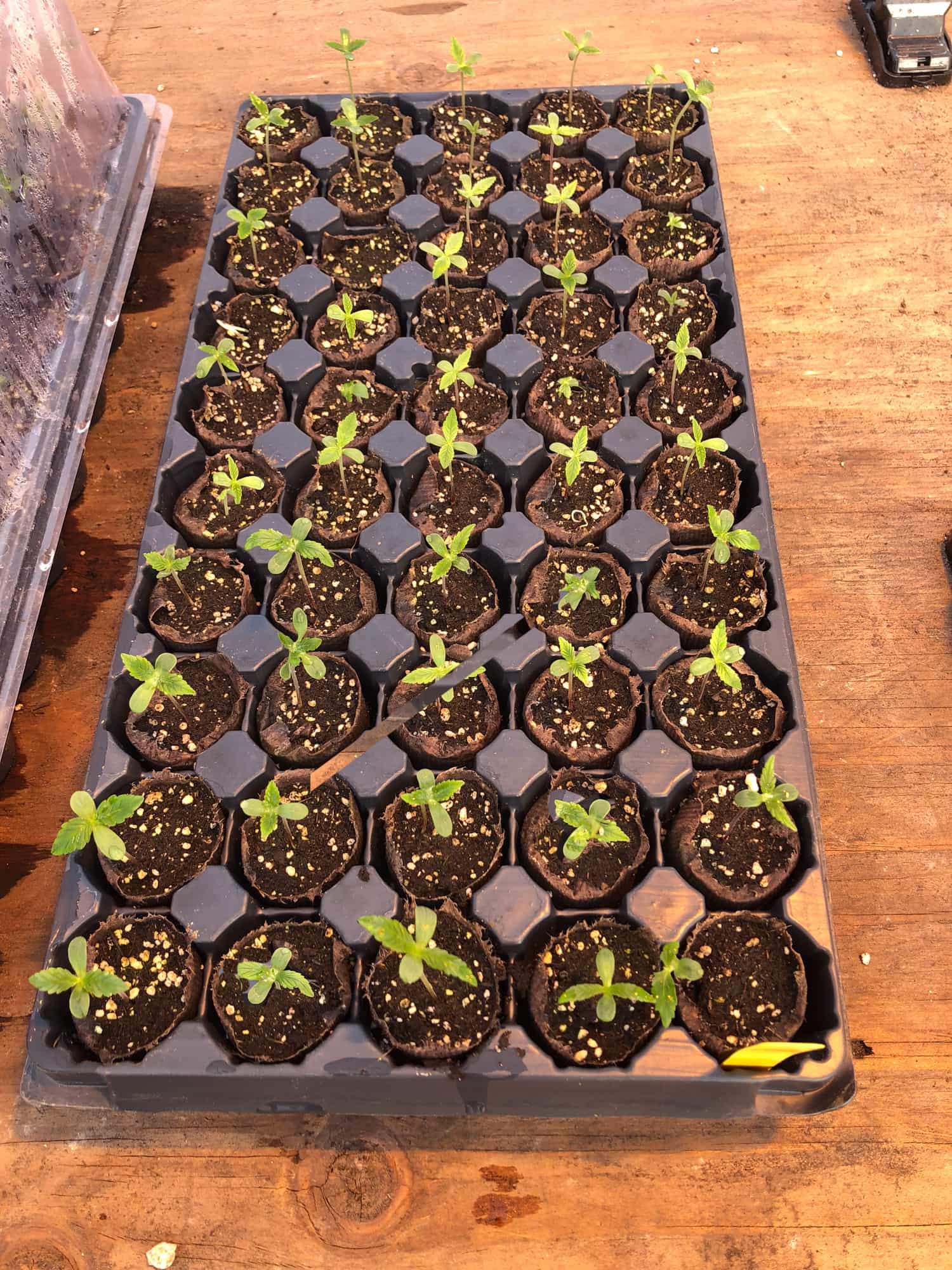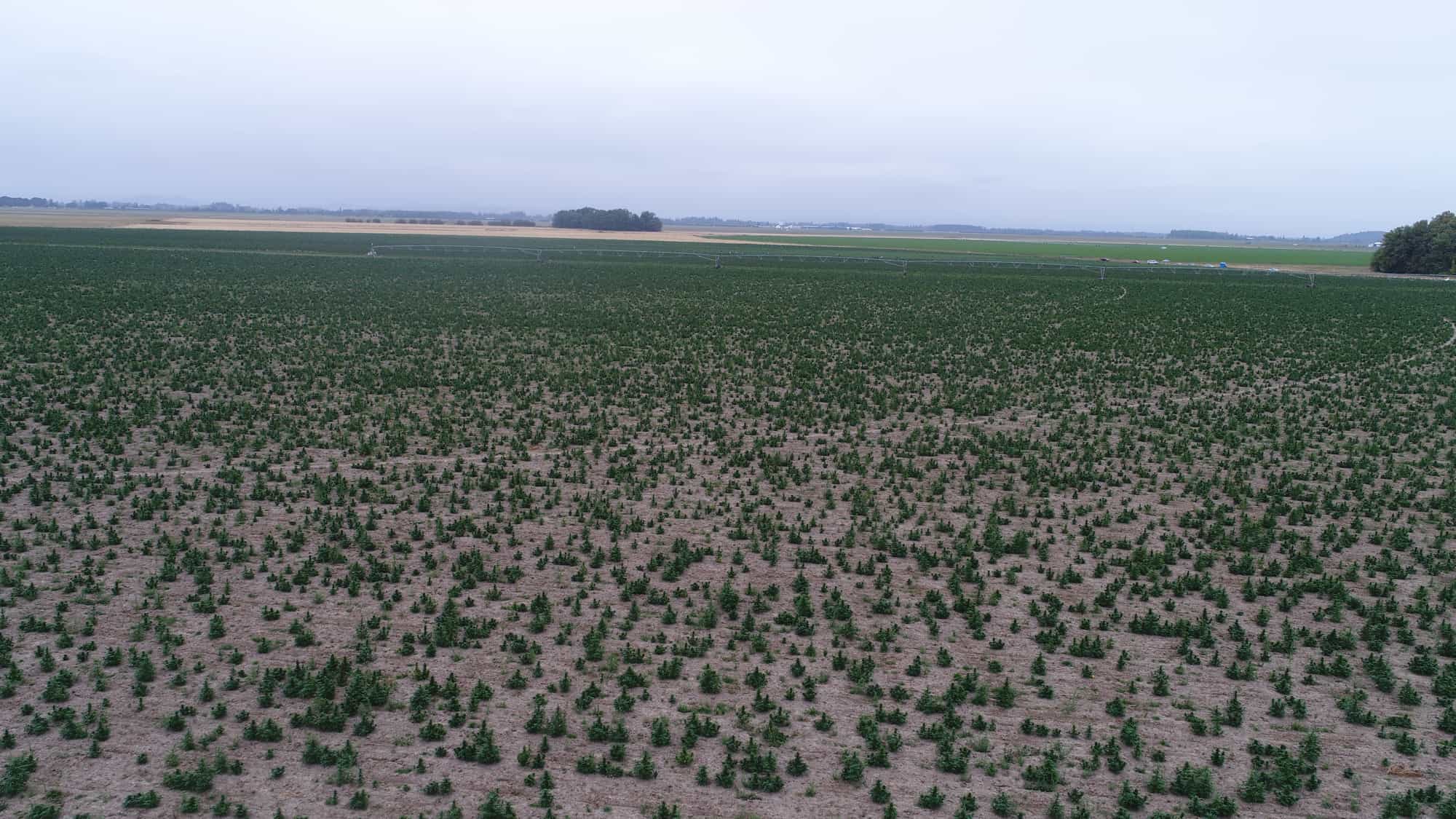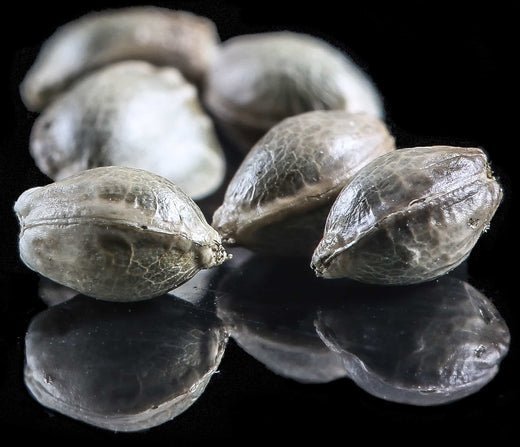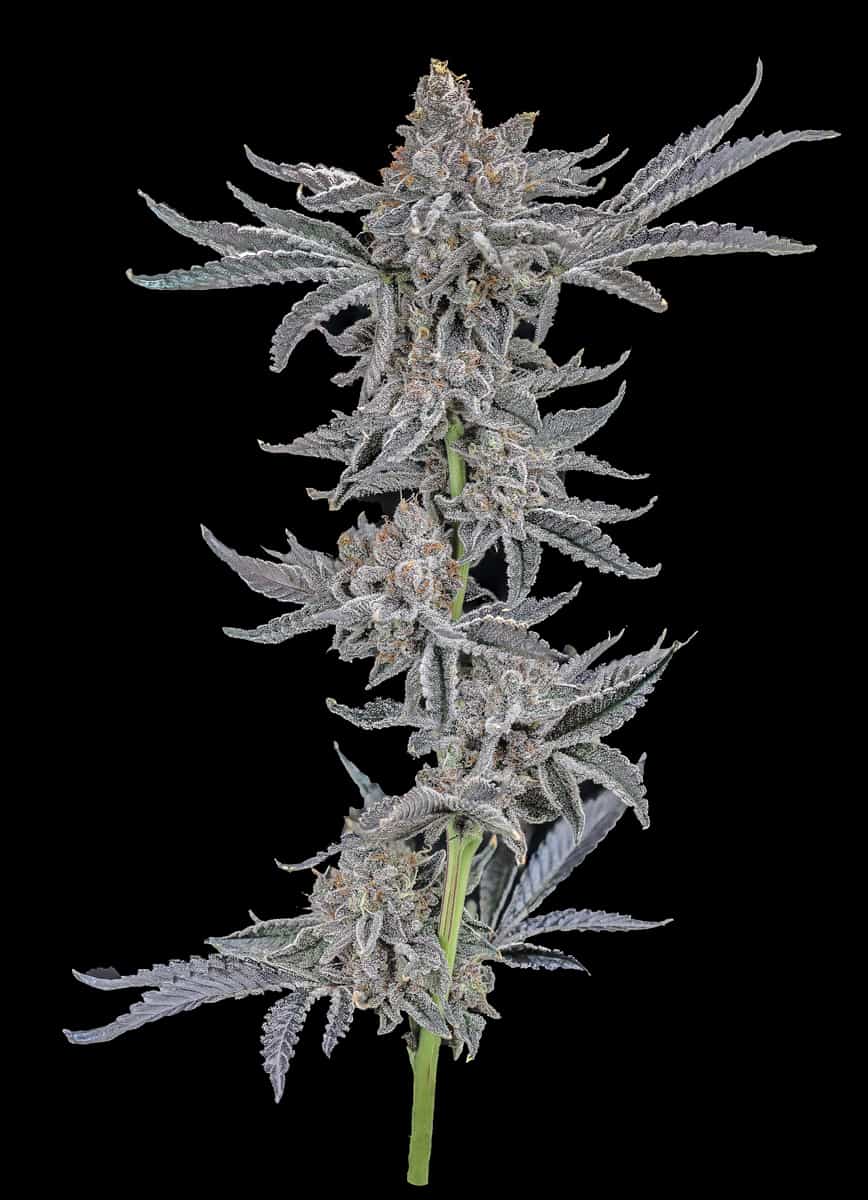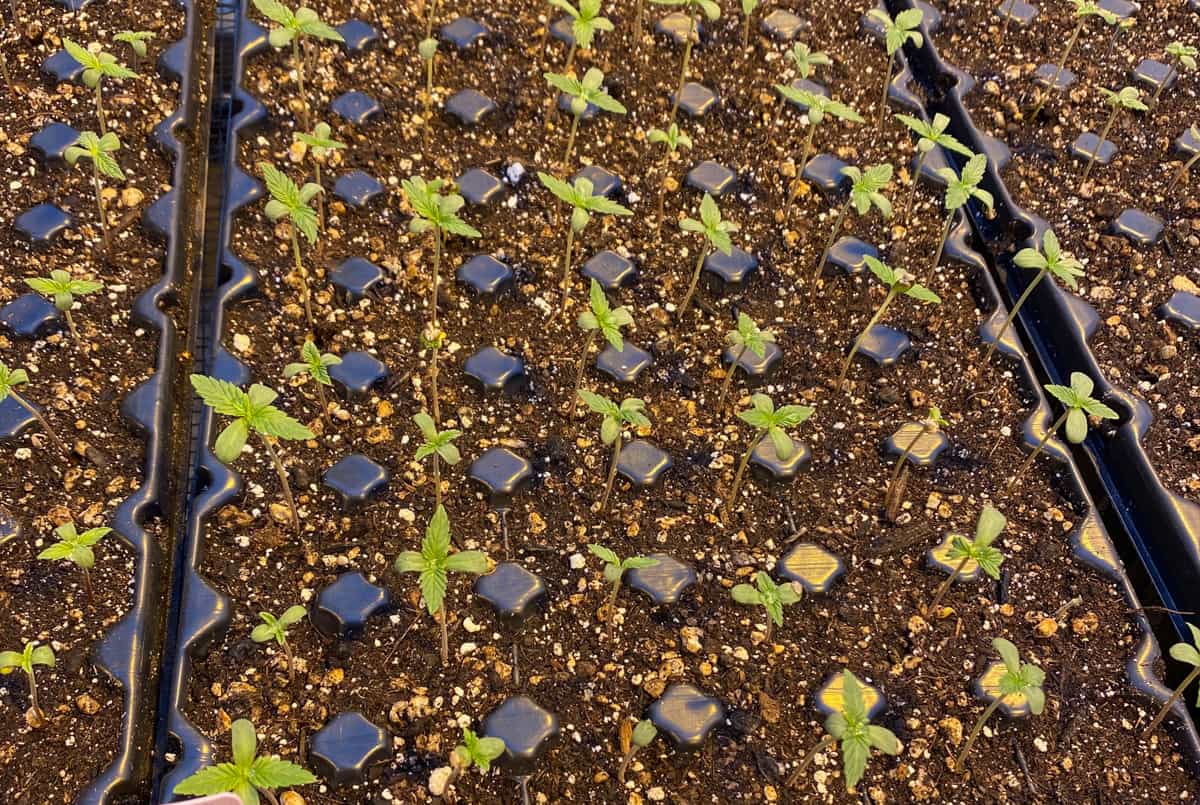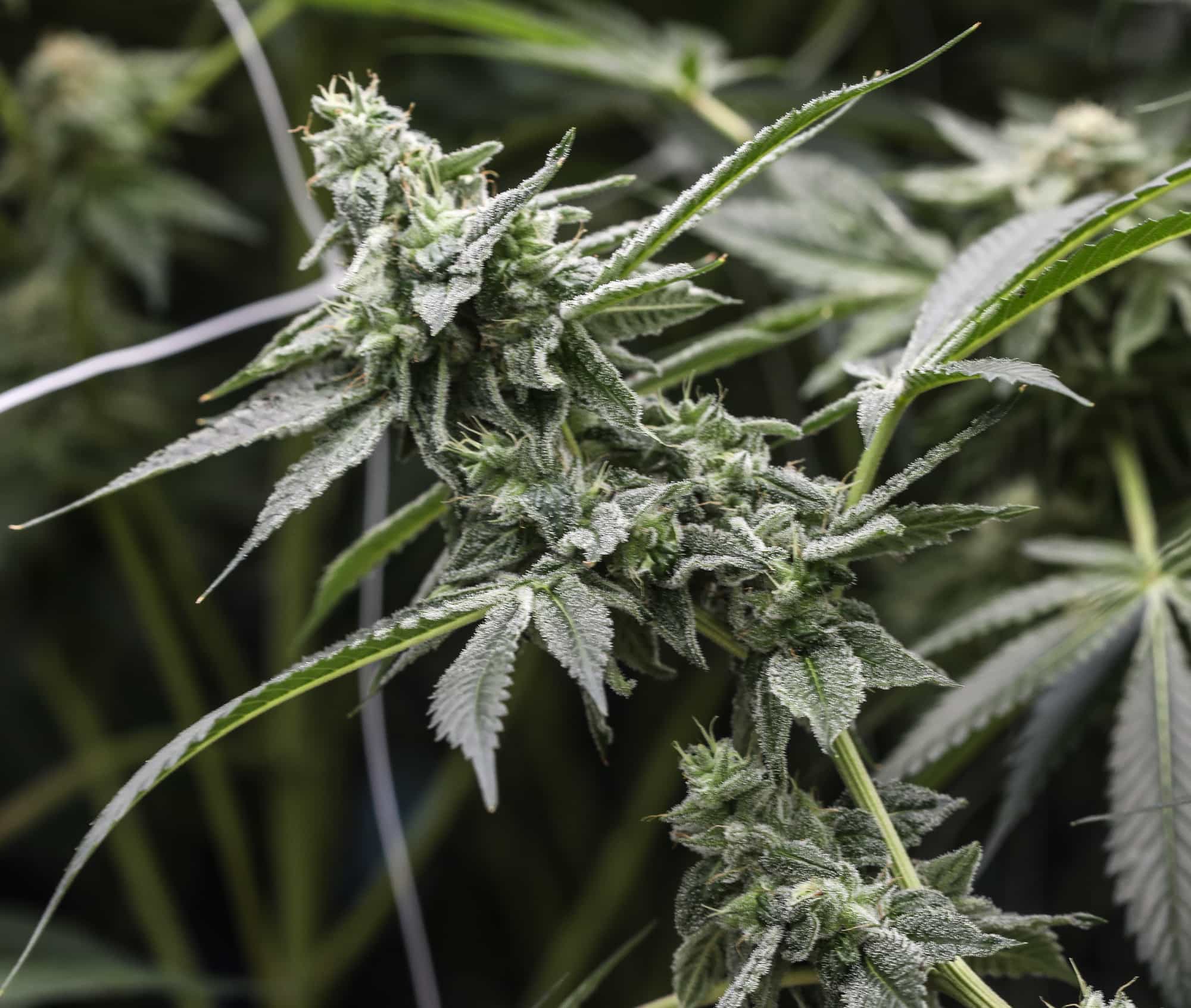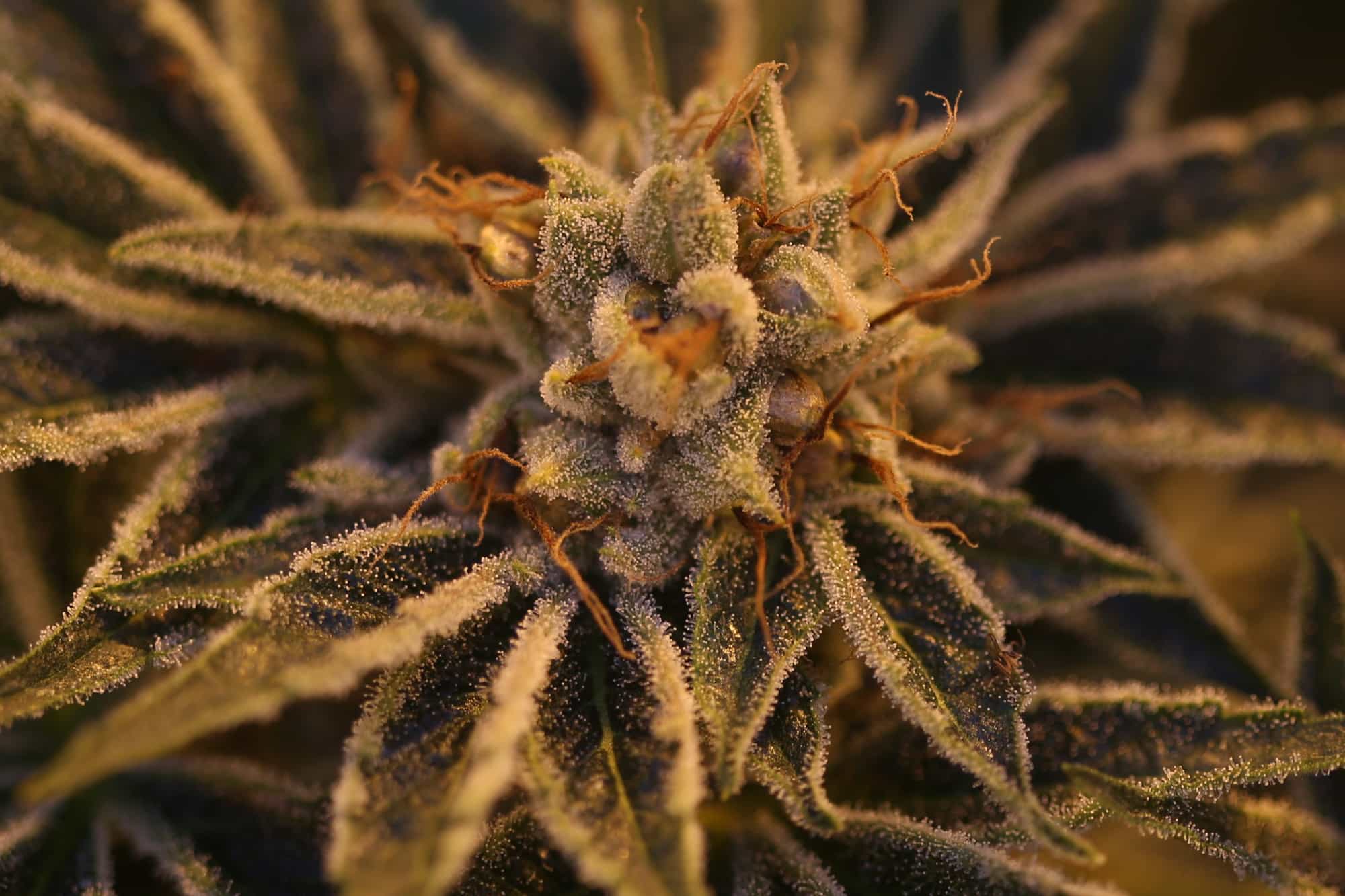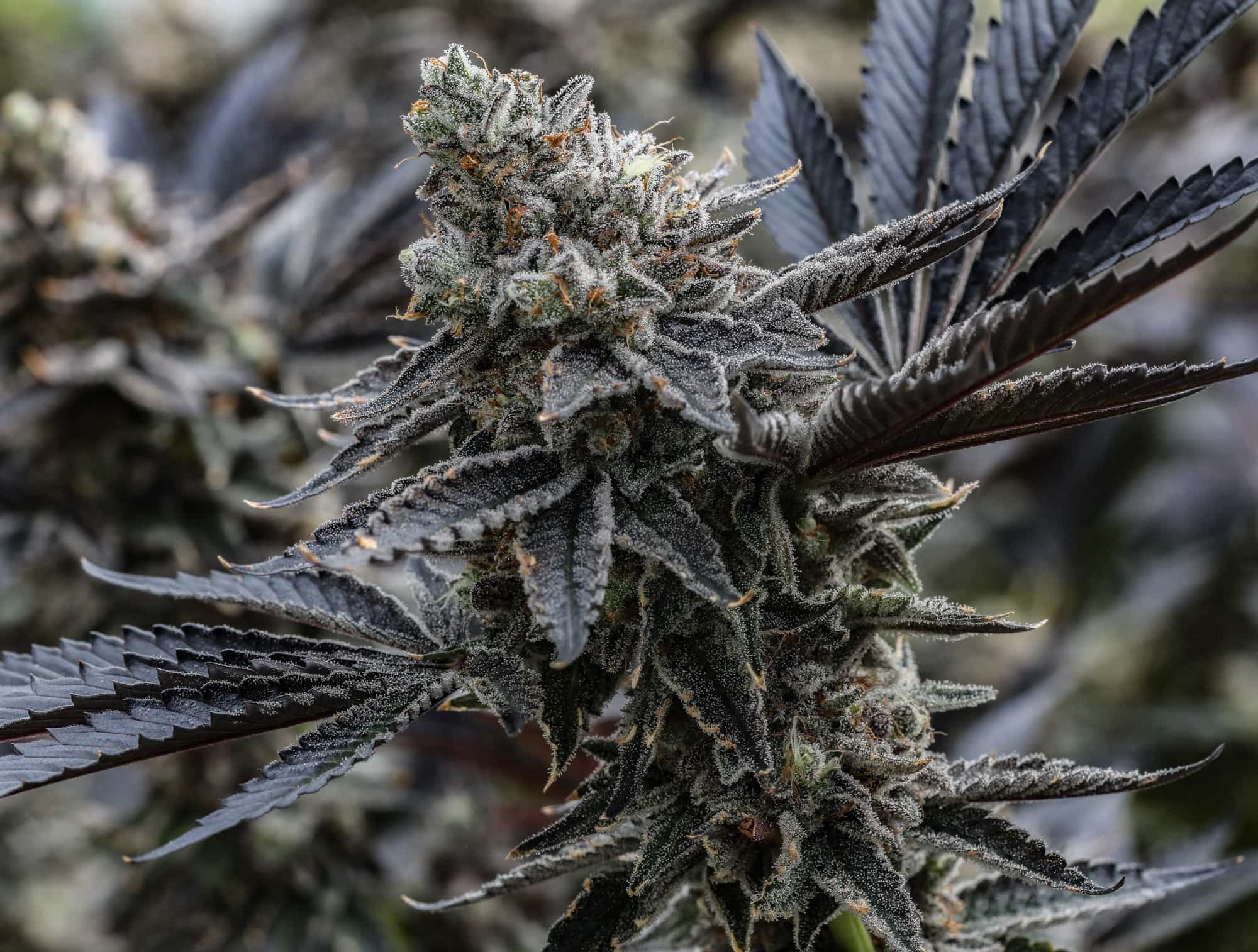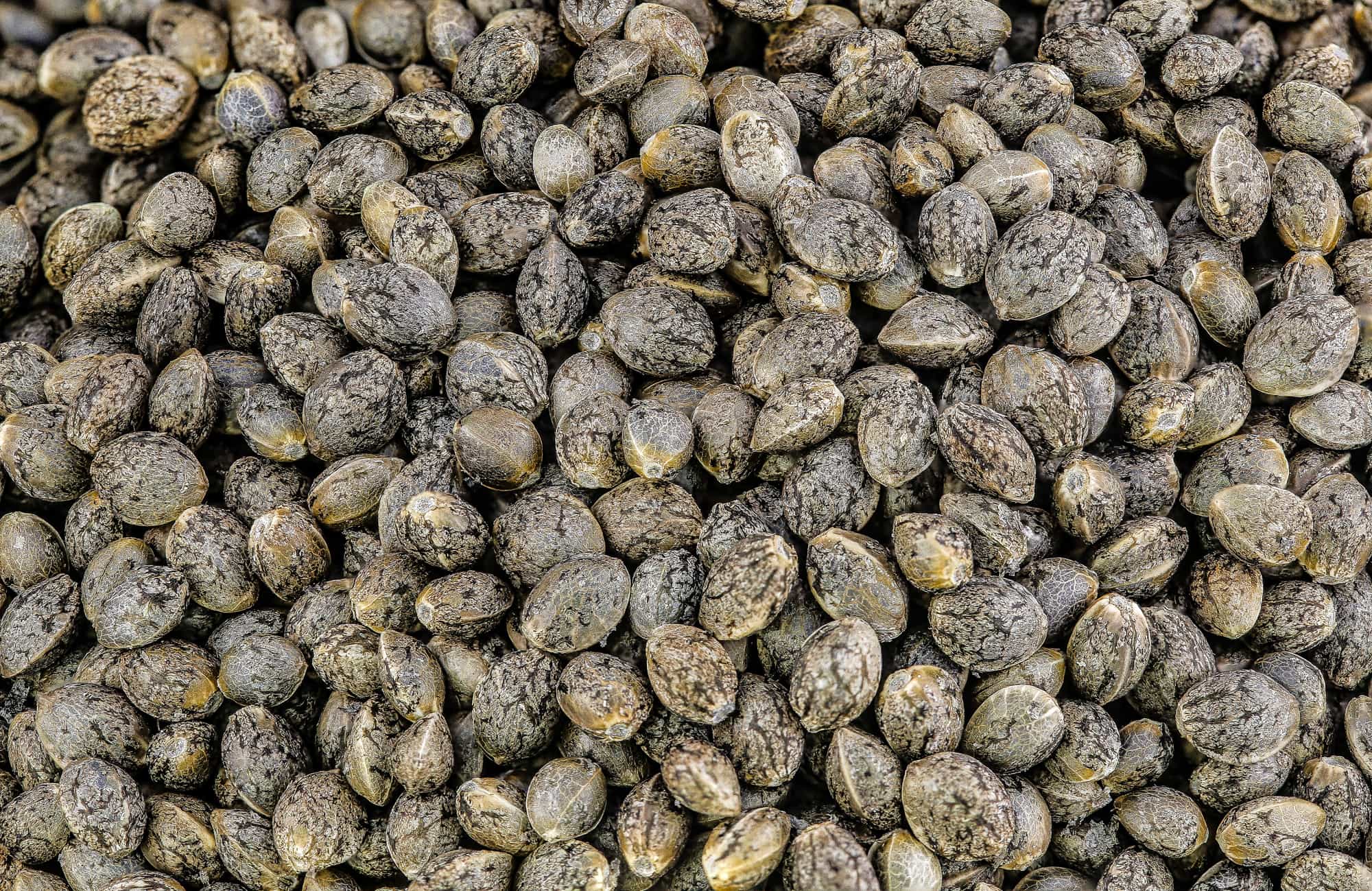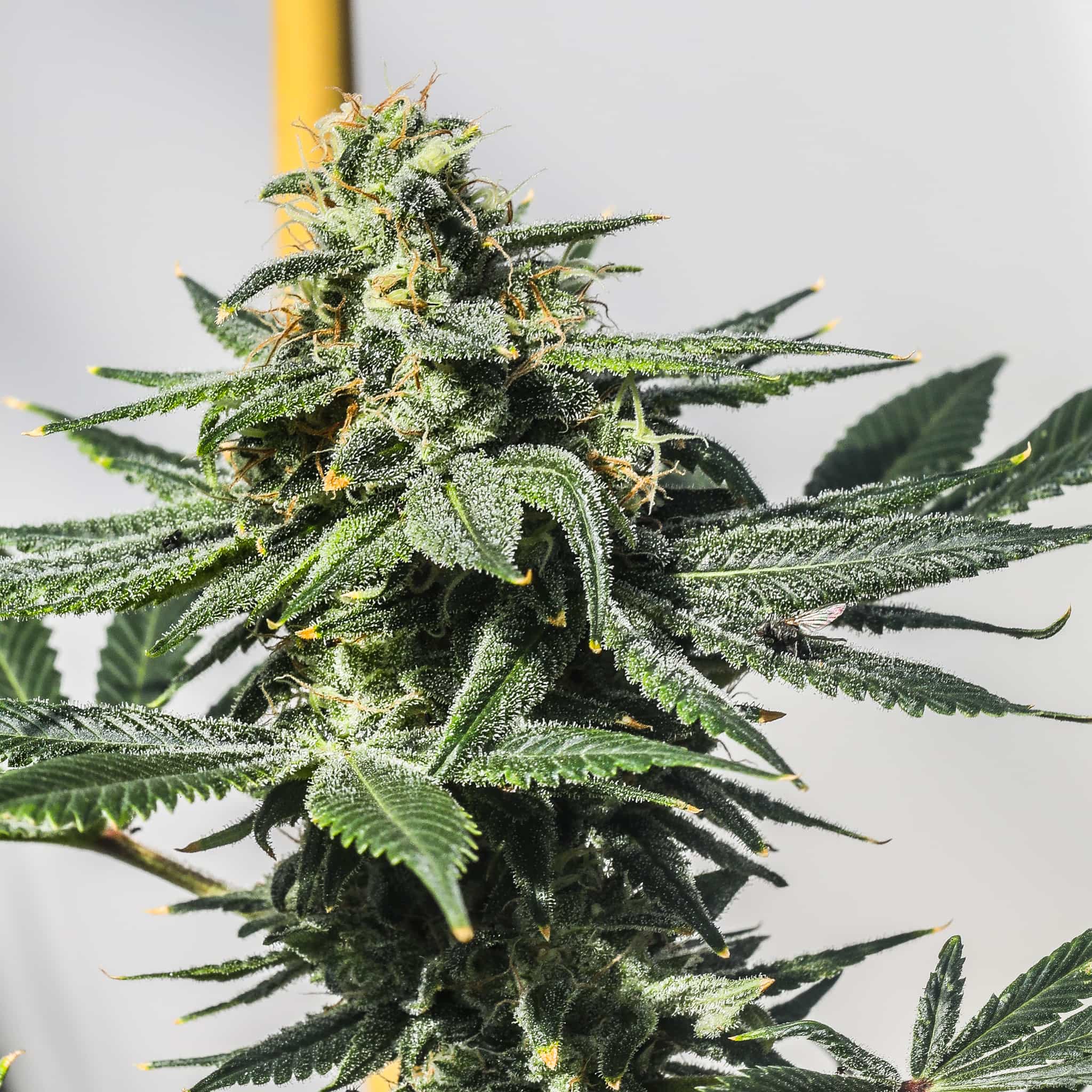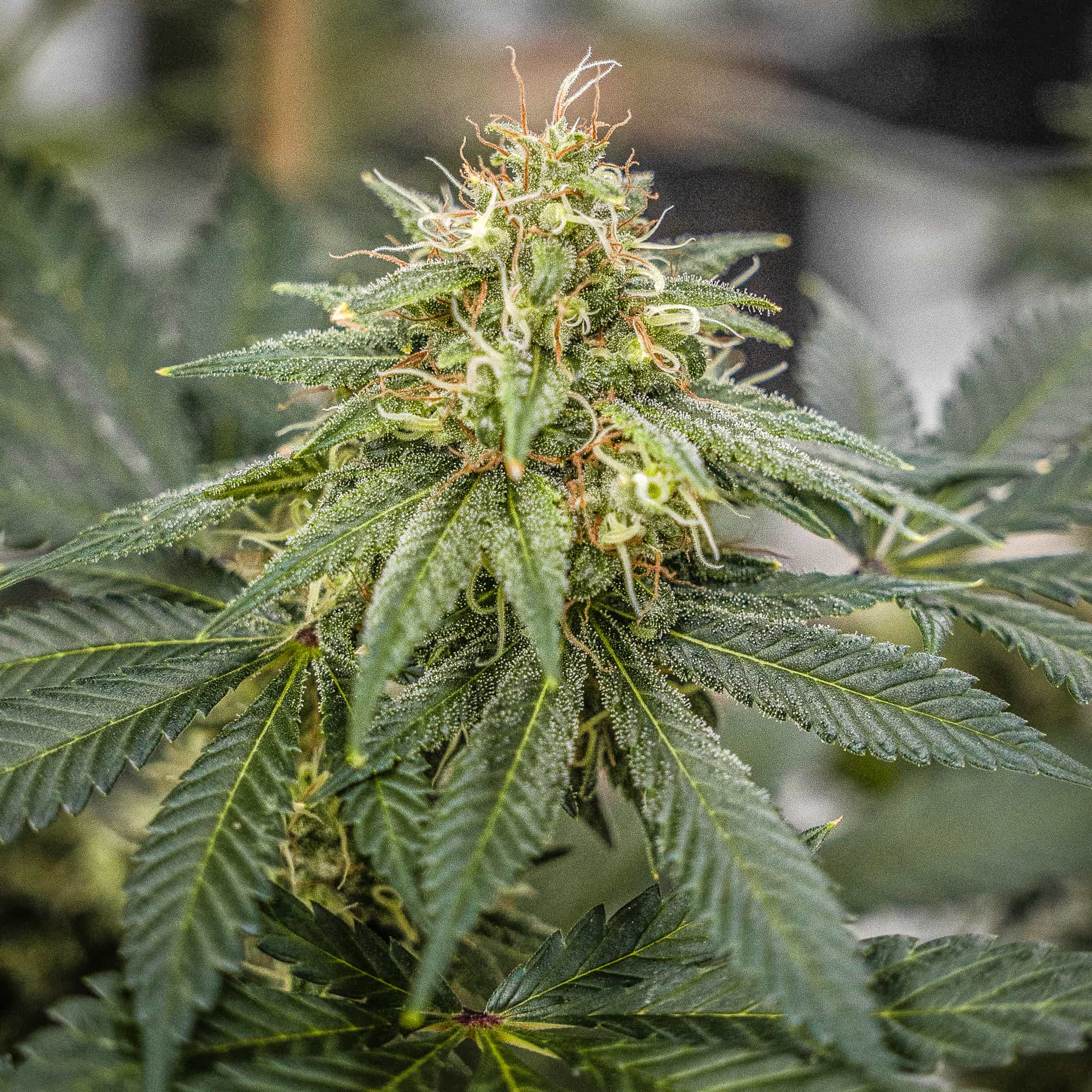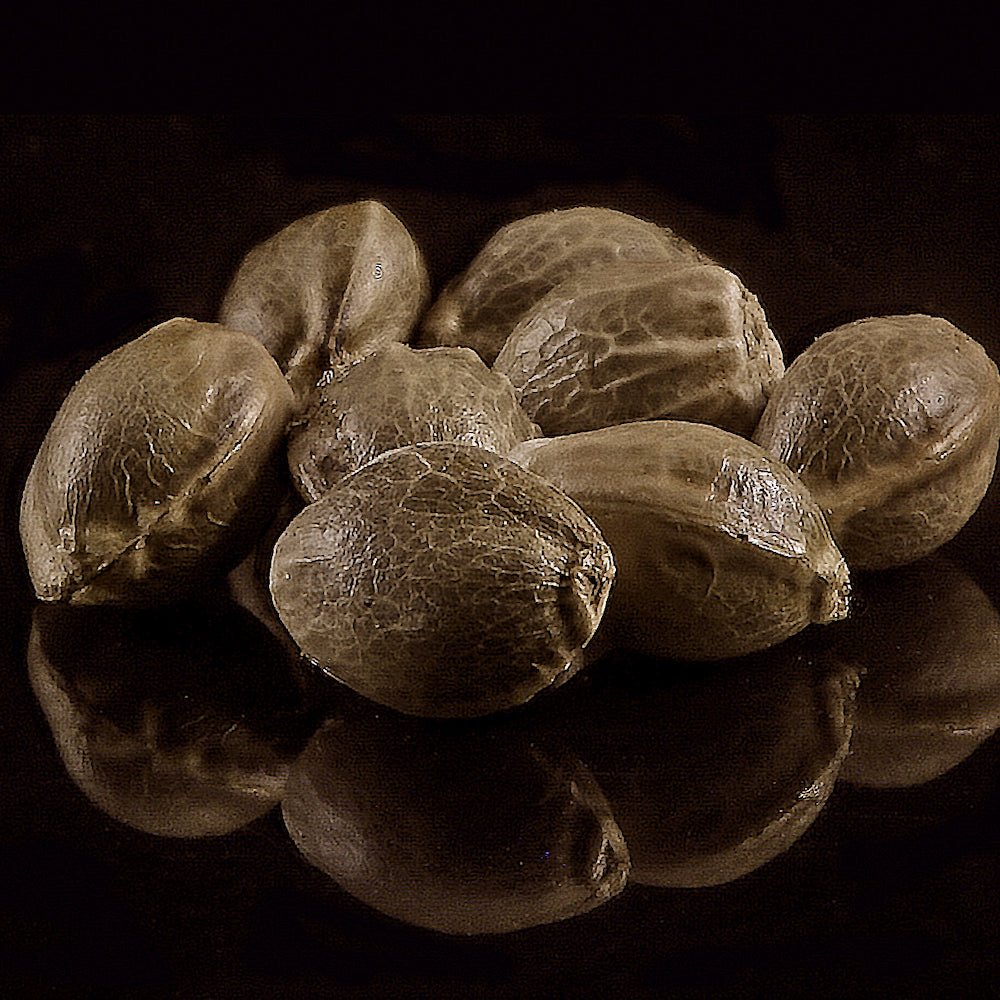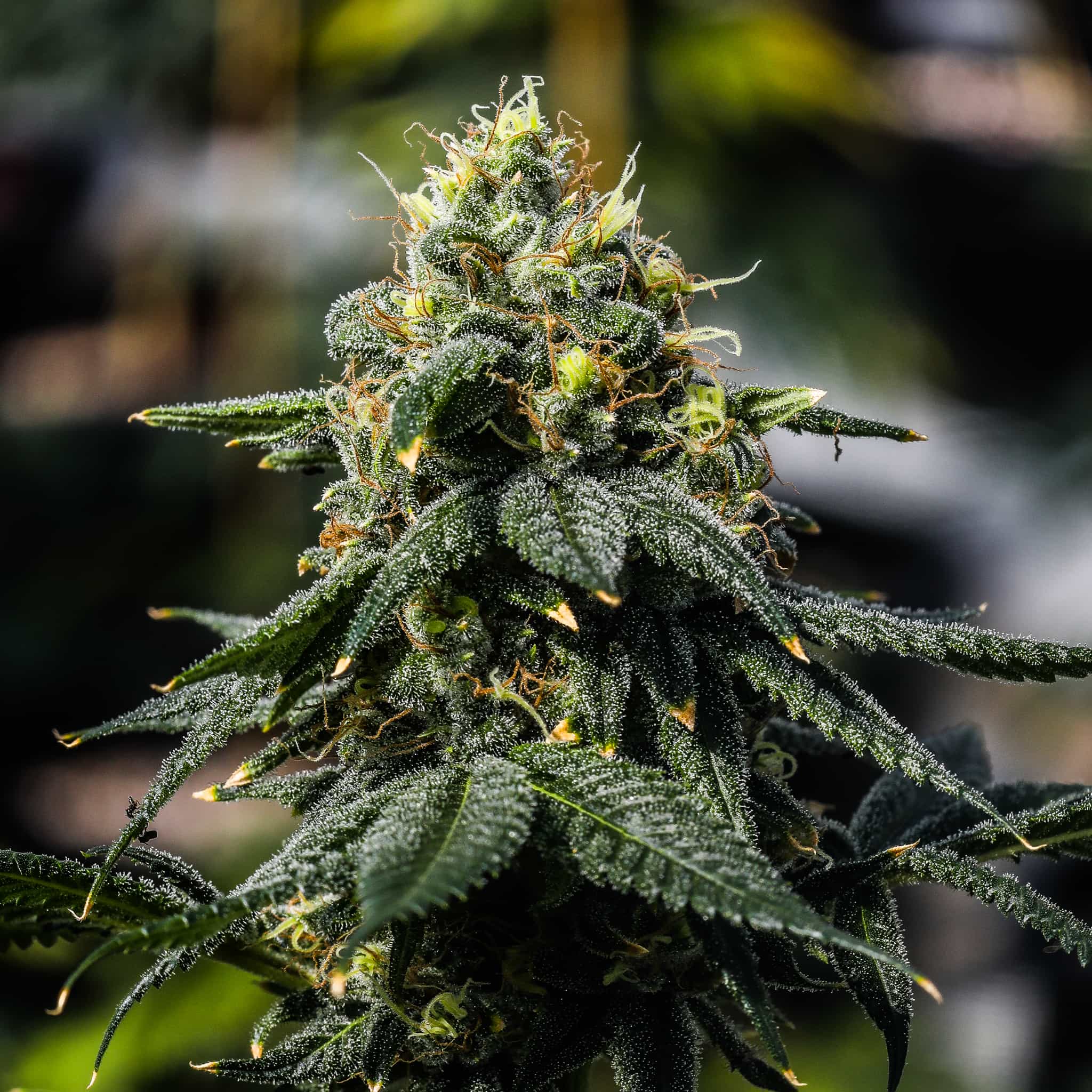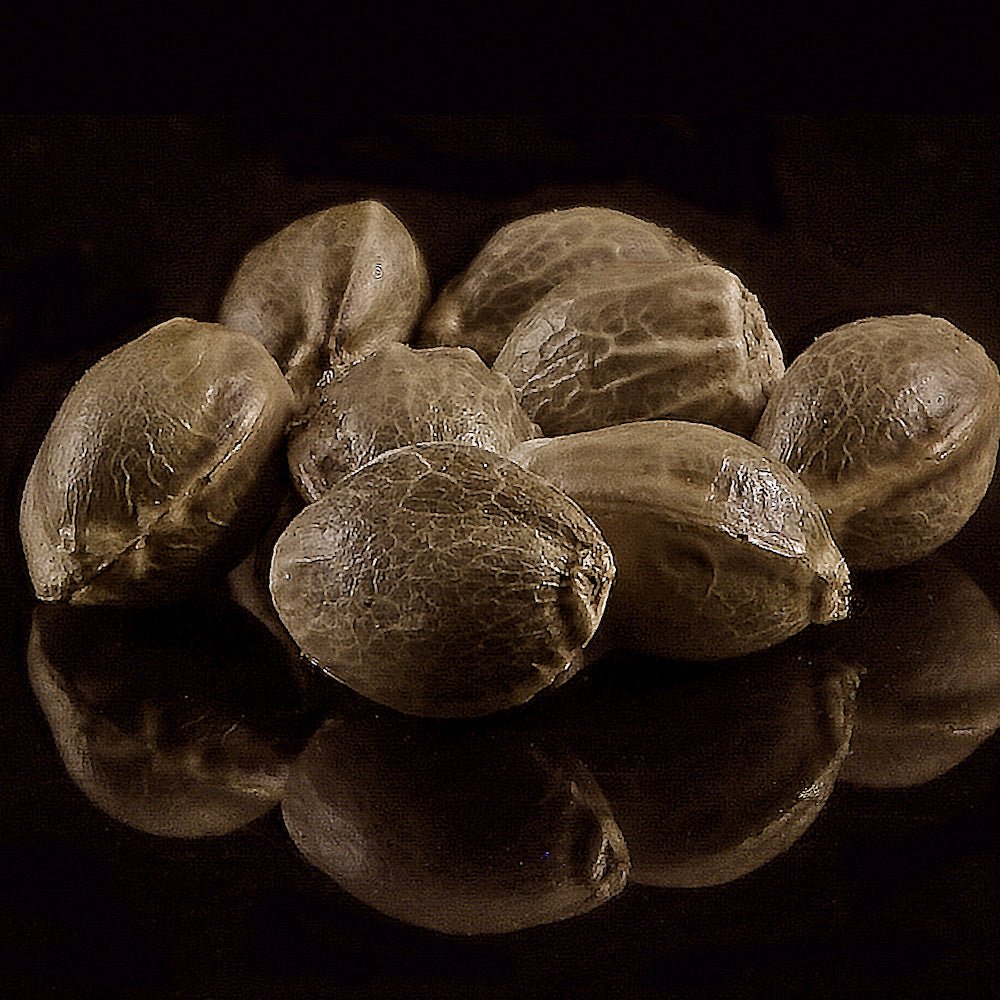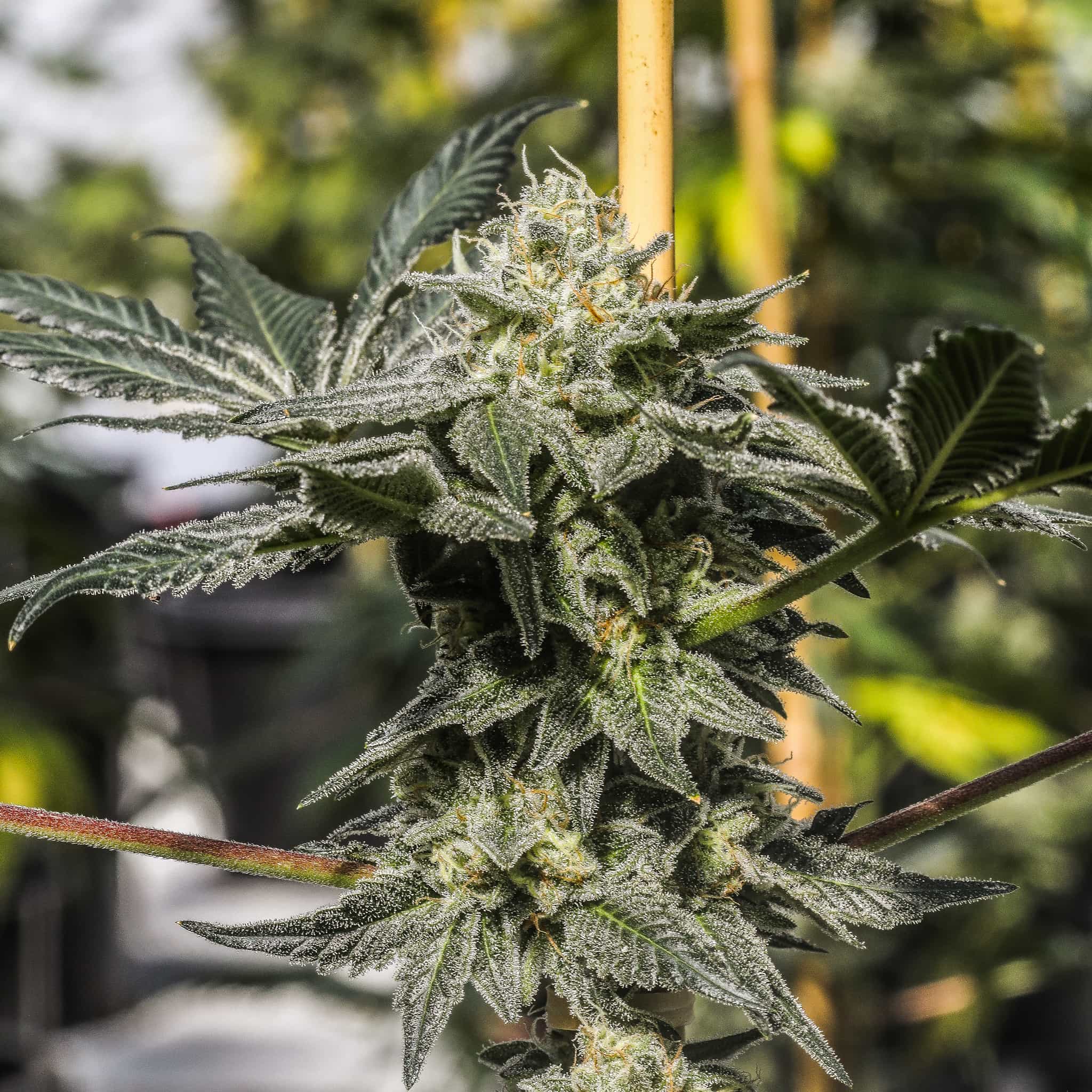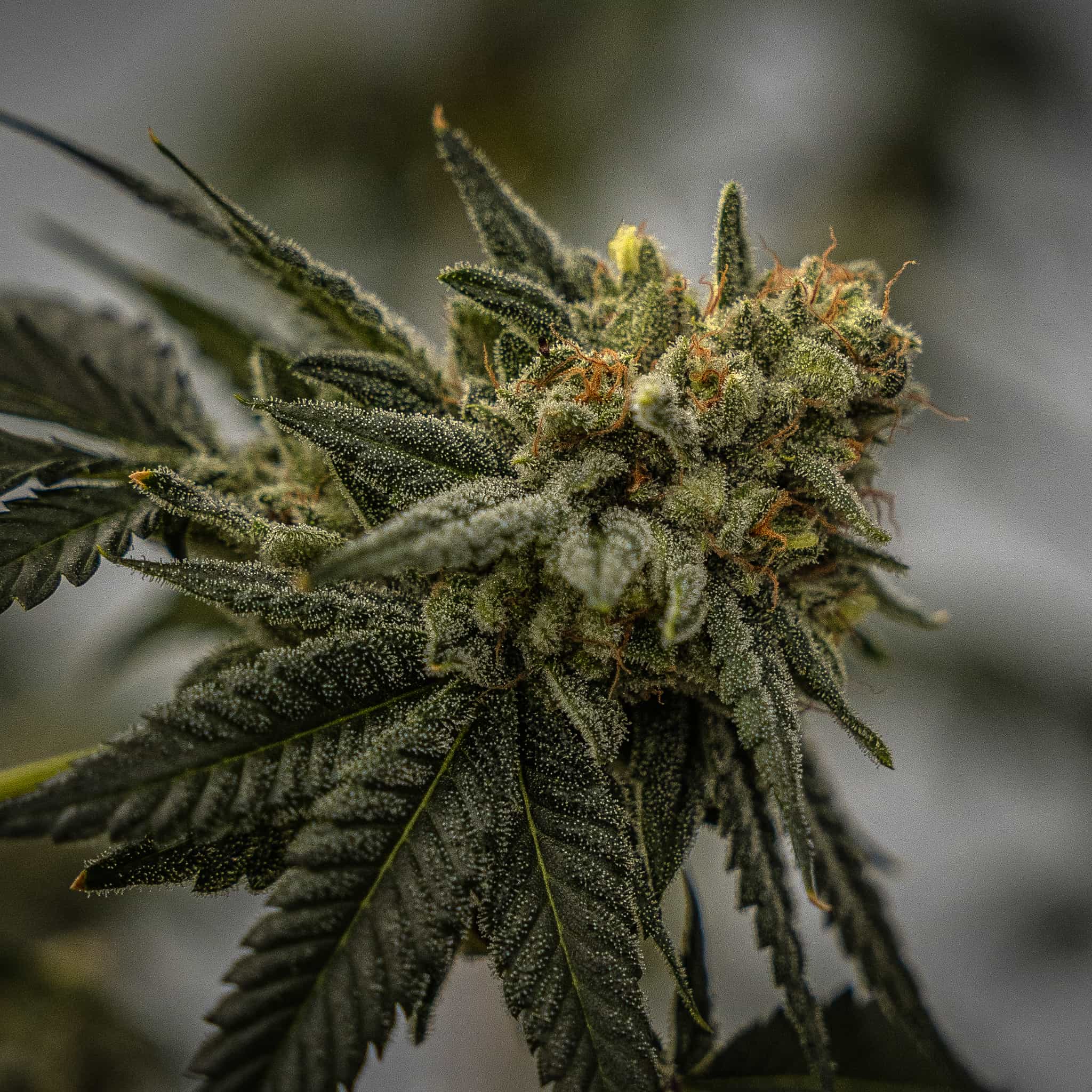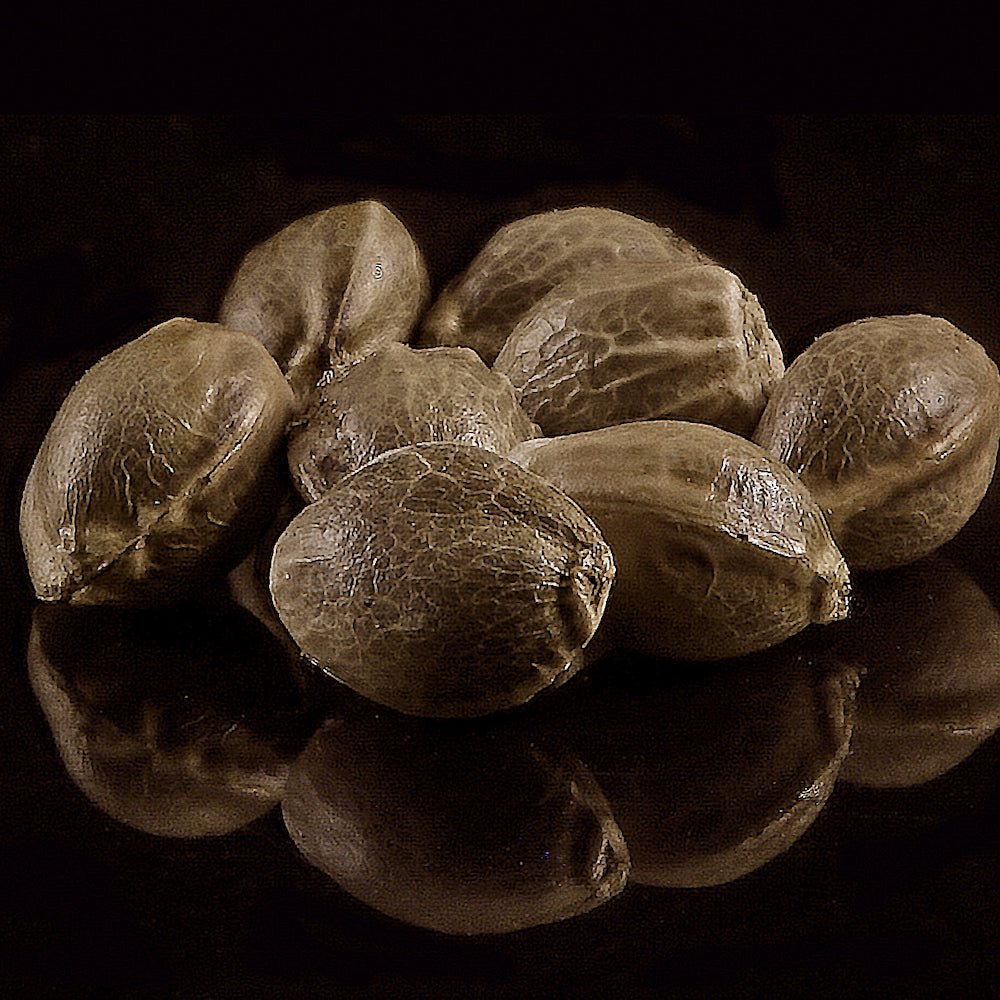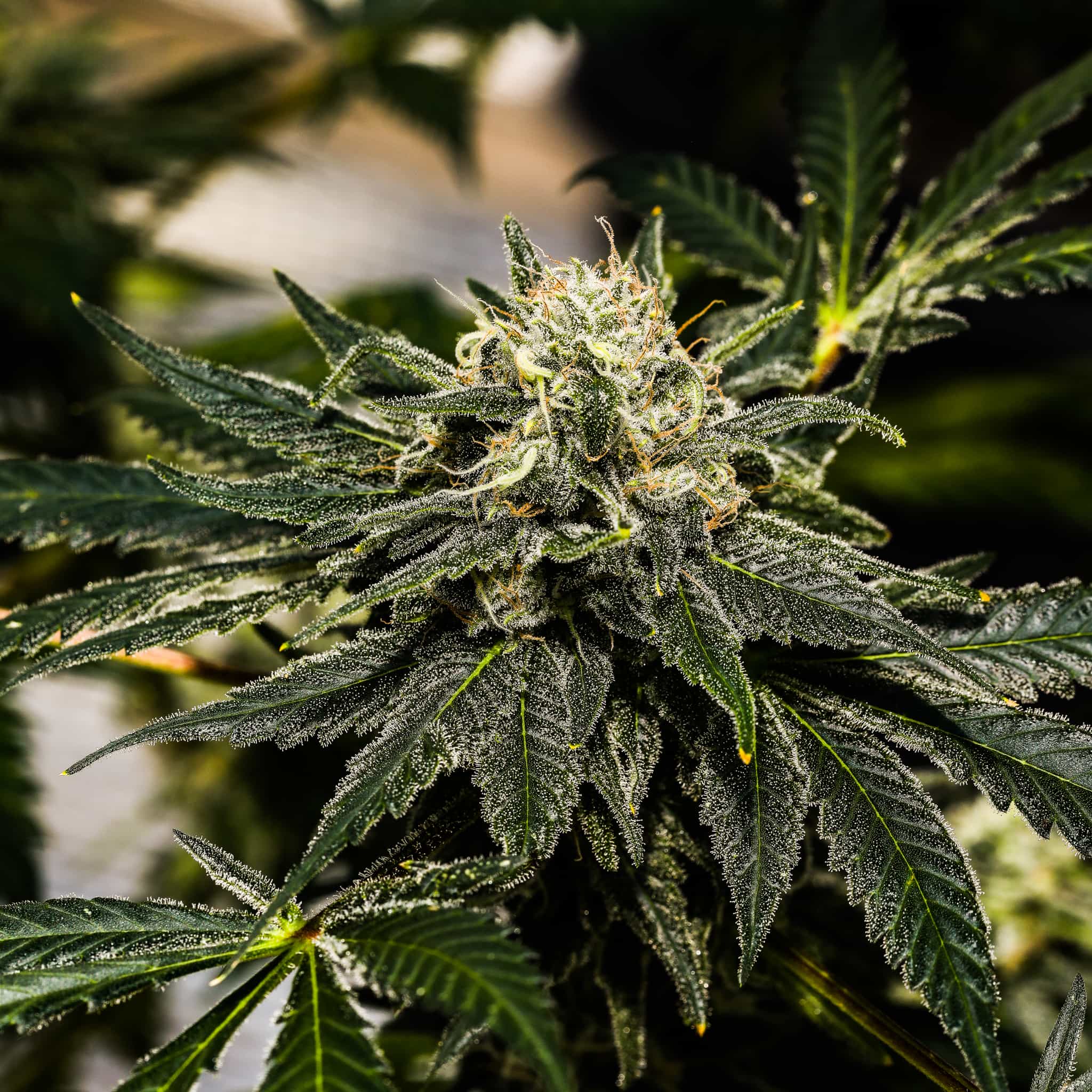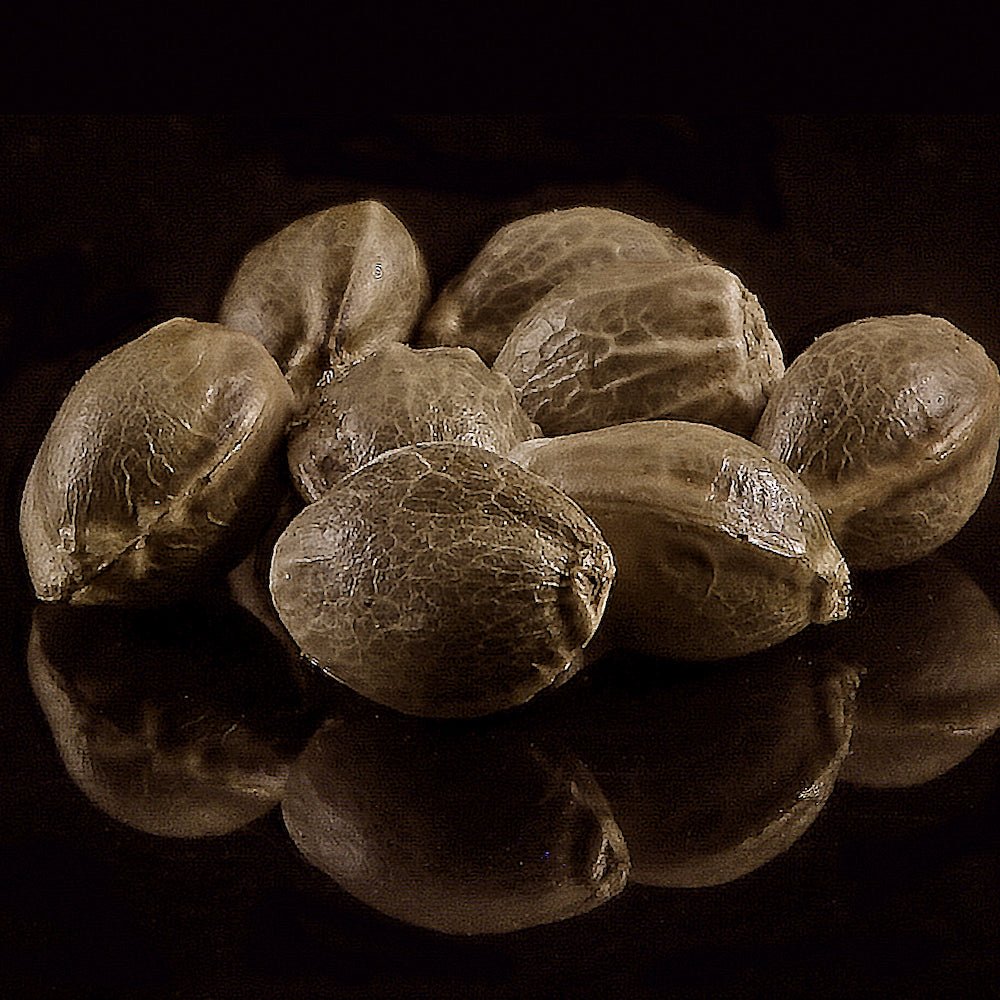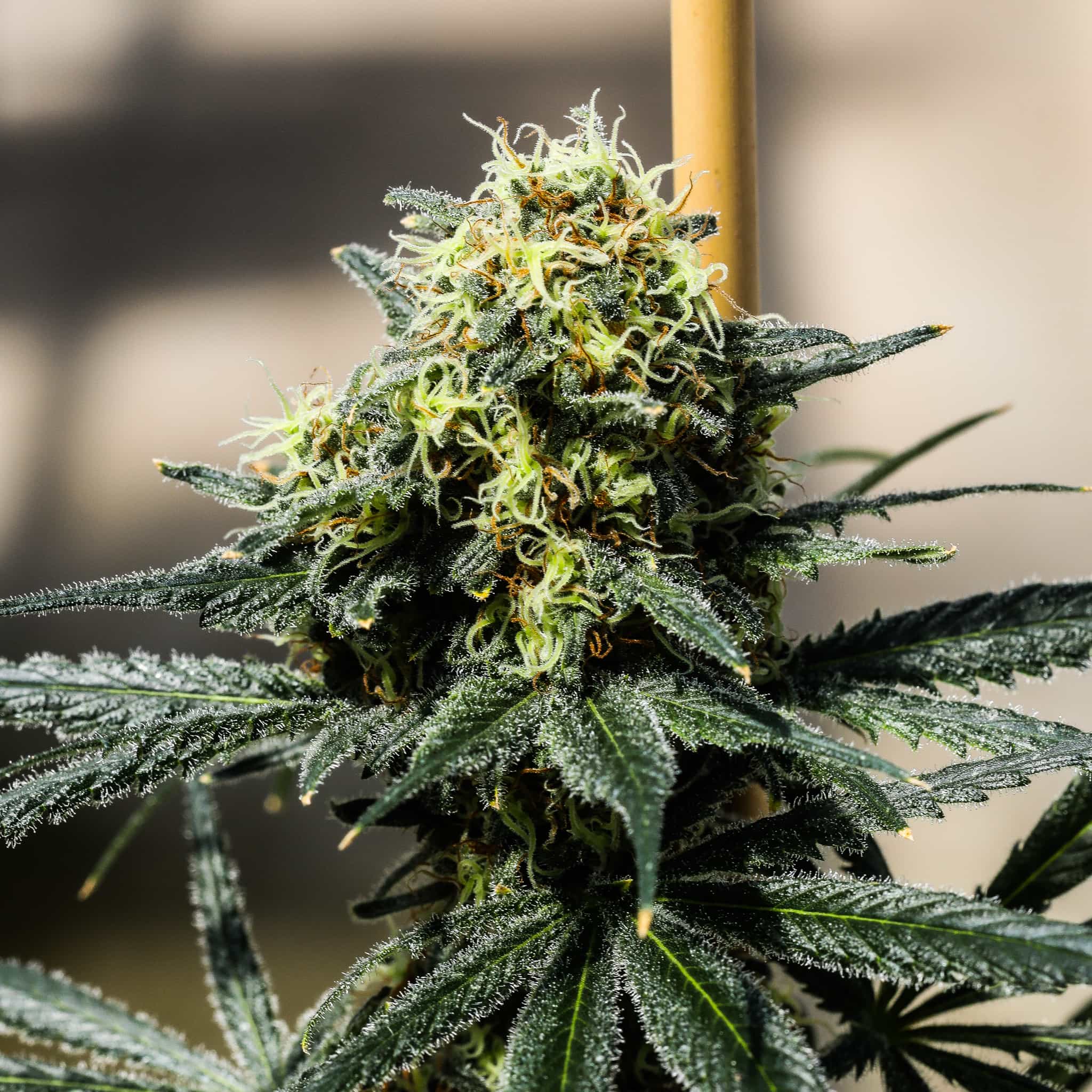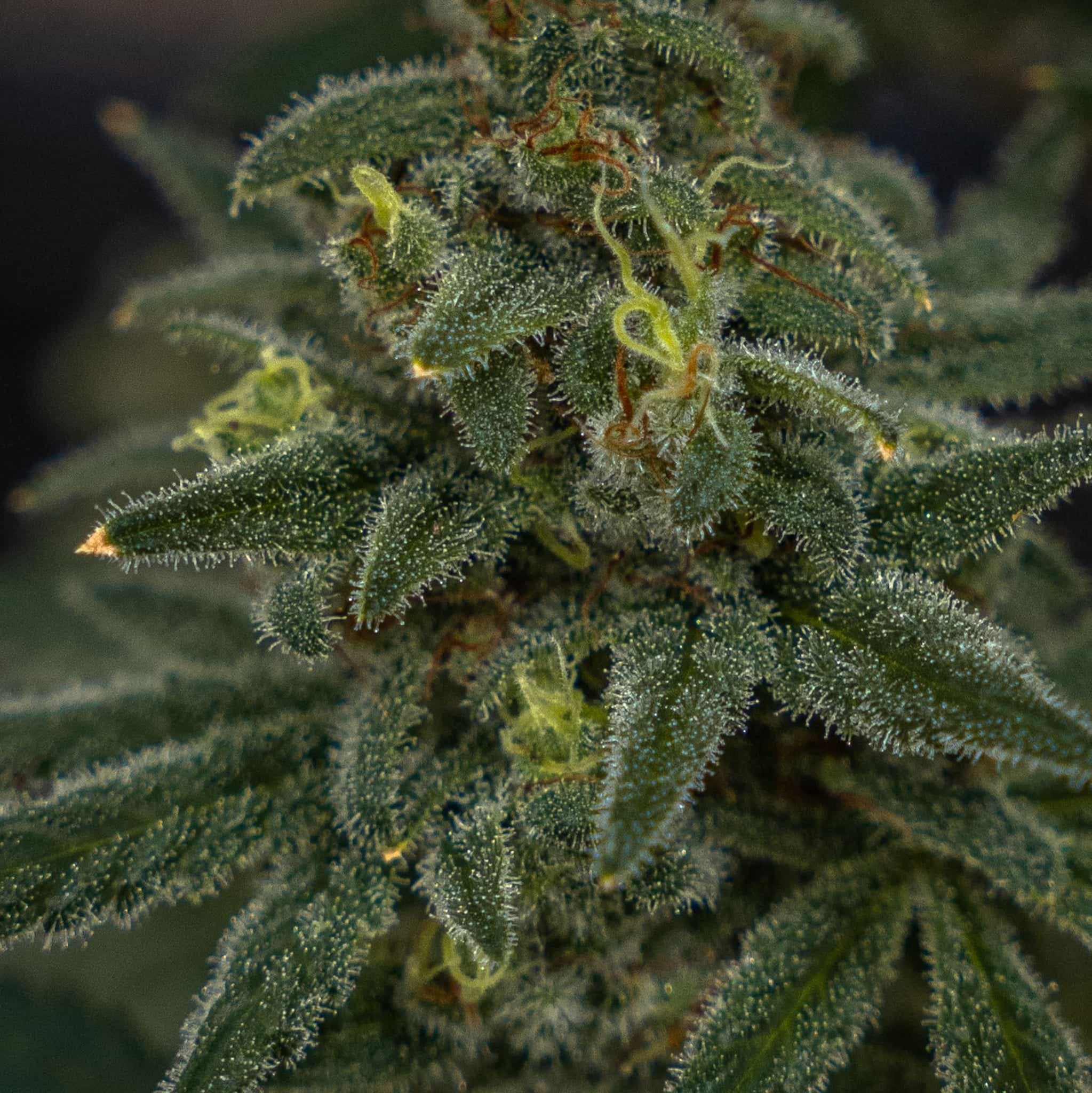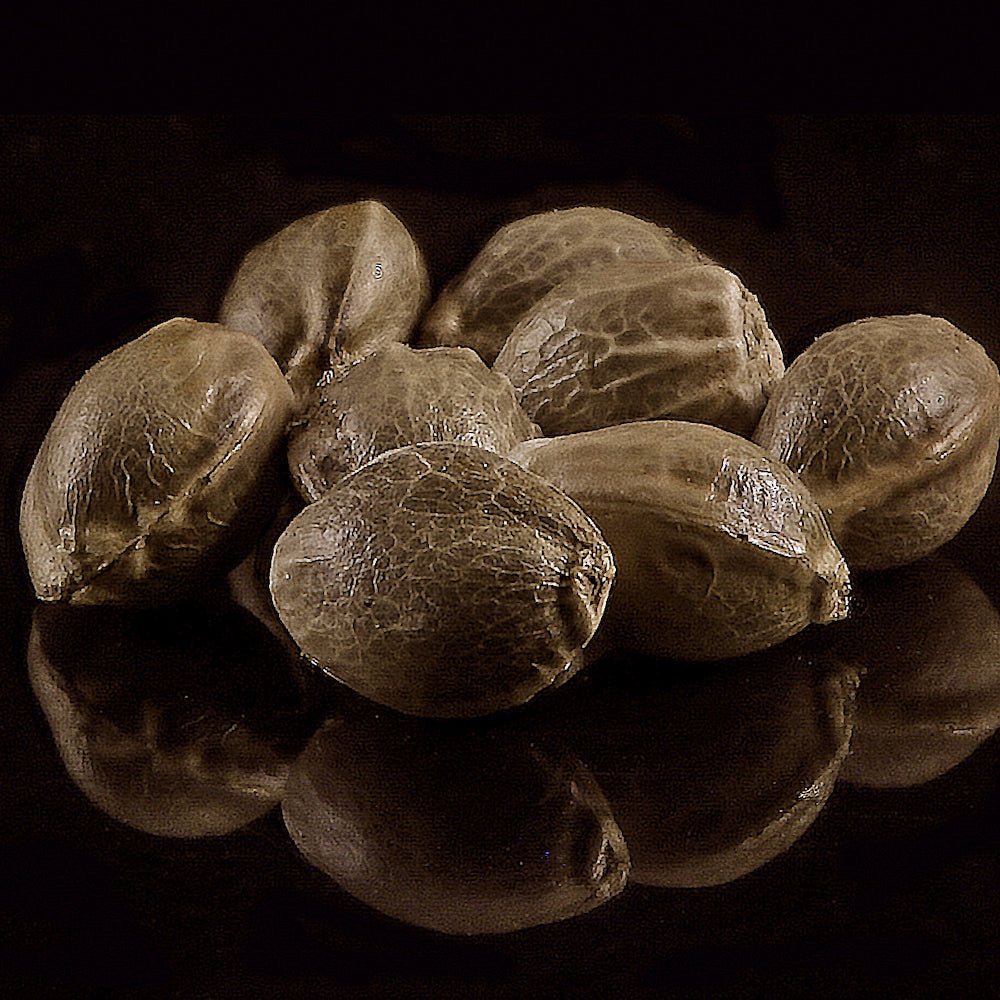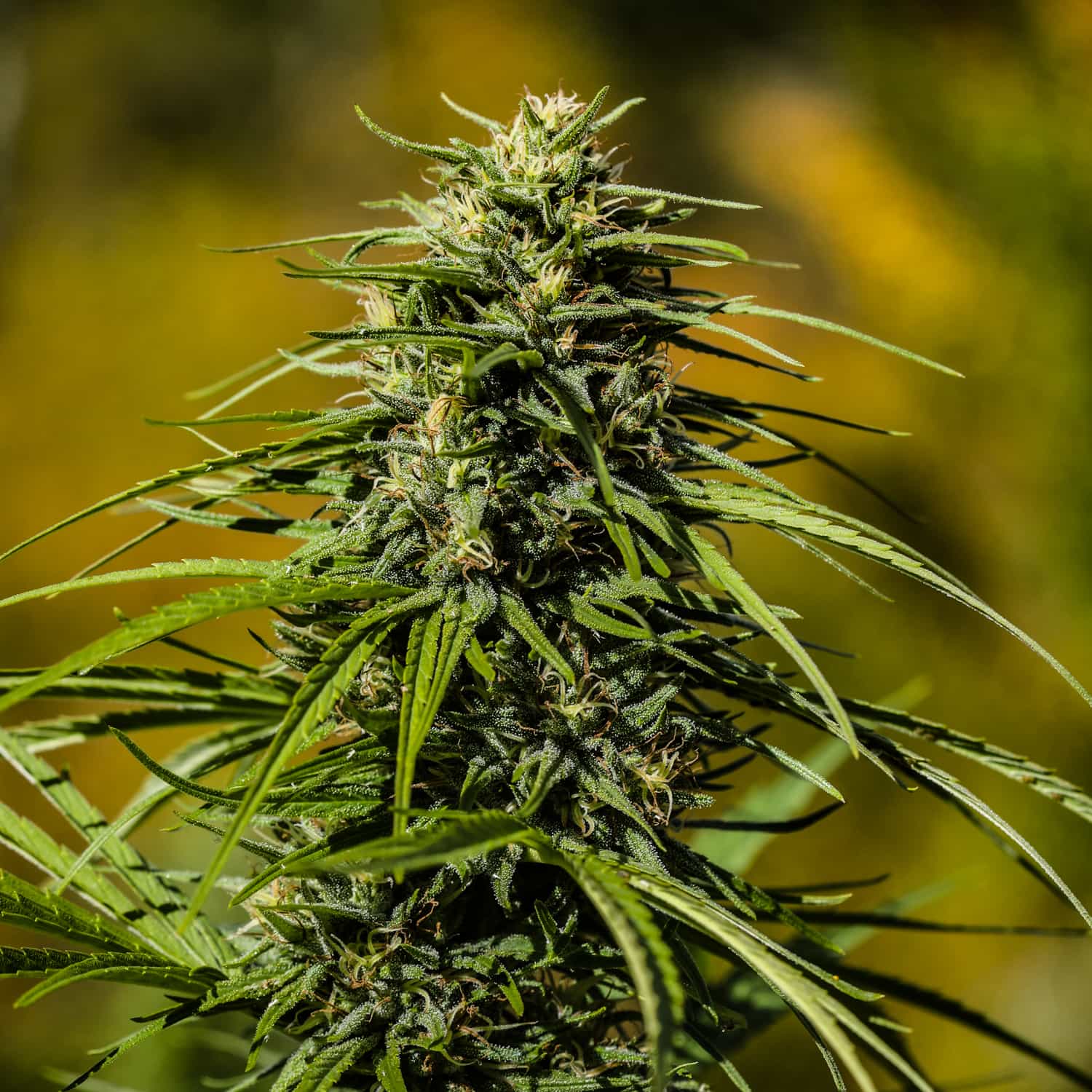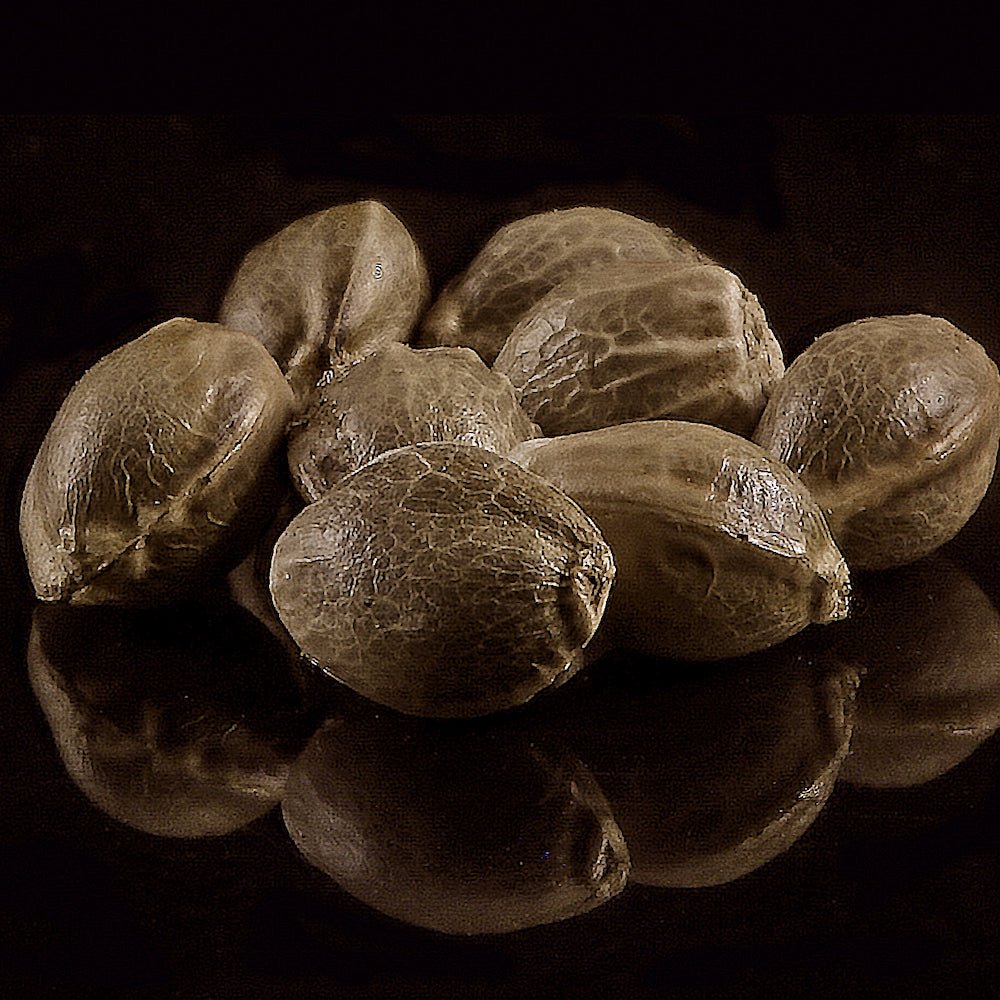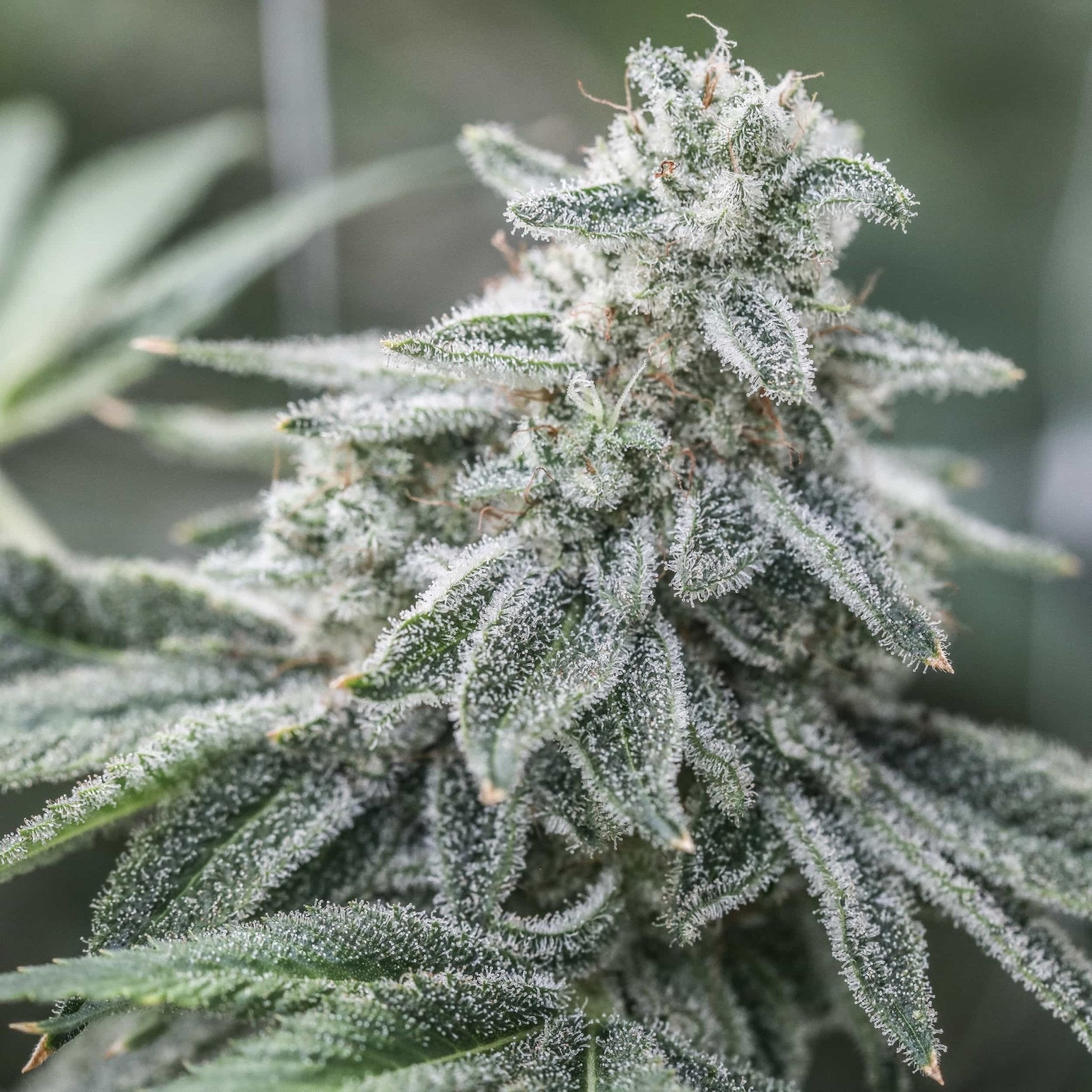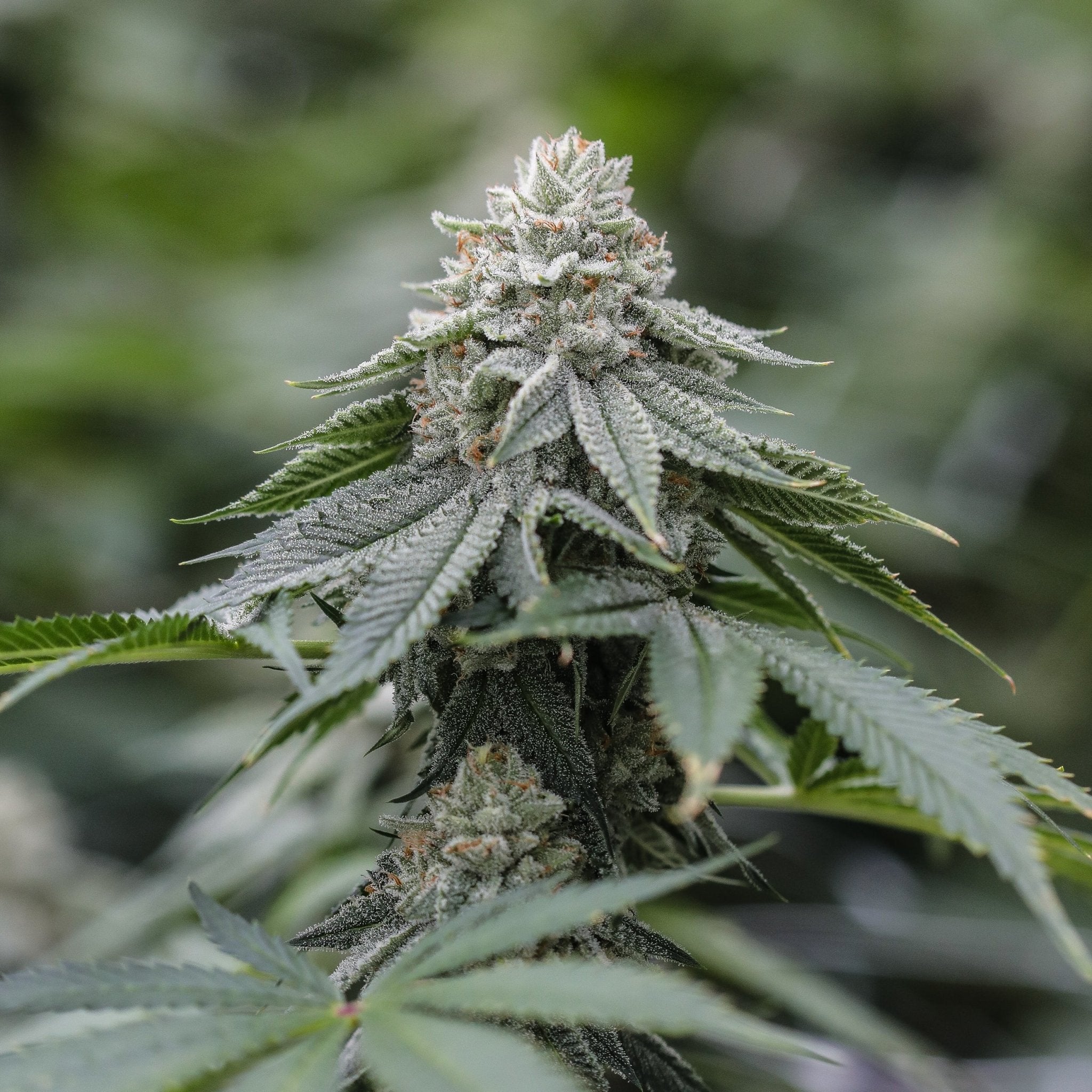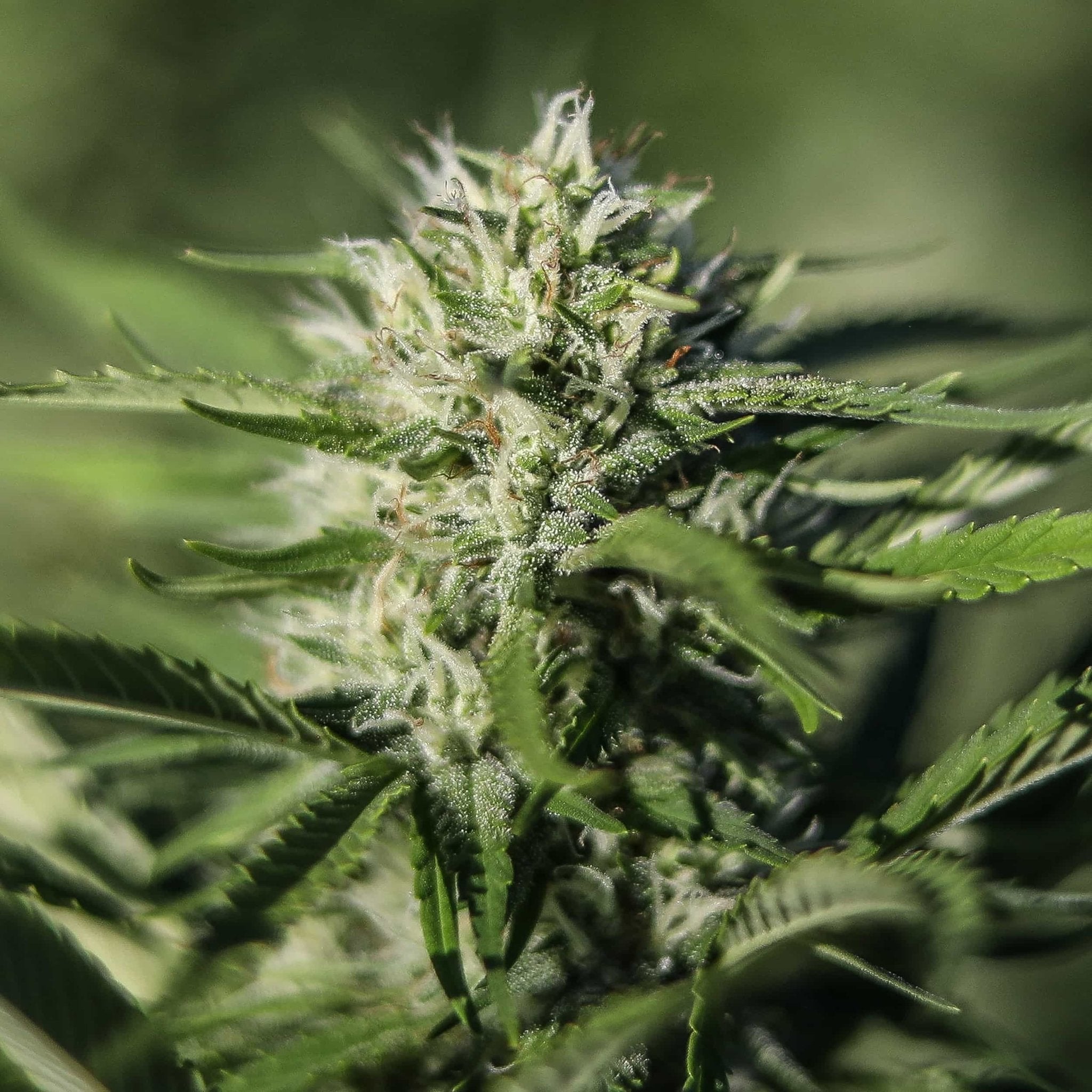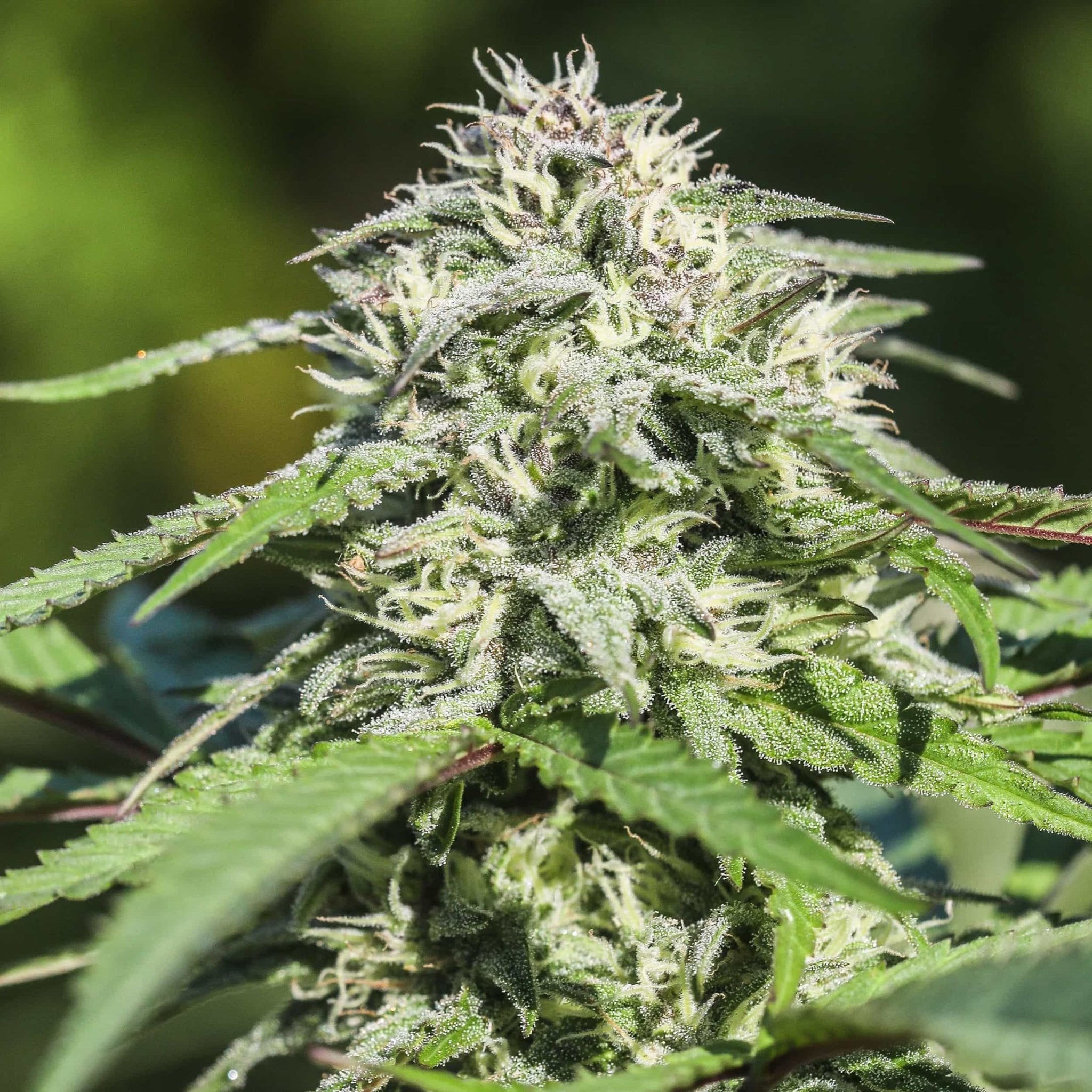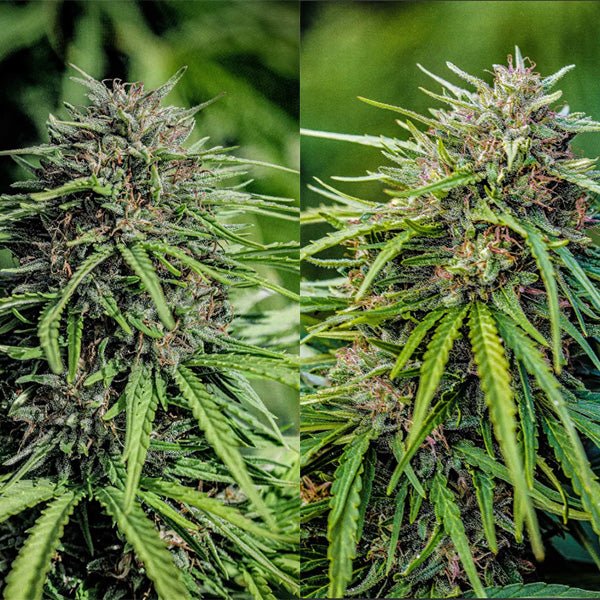Cannabis plants occasionally display mutations lingering in recessive DNA, forced by their environment, or full on genetic disorders. Genetics that commonly display mutations may not be desirable, for the most part the mutations are fun to look at and not a threat to your room or fields. Read on for a few oddities you might run into as a cannabis grower.
Fasciation

Fasciation in cannabis plants refers to a rare abnormality where the plant's growth becomes flattened or elongated in a way that differs from its typical structure. Instead of growing in a cylindrical, round shape, the affected stems or flowers may appear ribbon-like or unusually wide. This can happen due to genetic mutations, environmental stressors, or infections, but it’s most commonly associated with specific plant growth hormones.
This mutation is commonly called polyploidy, which it is not. Fasciation can lead to a variety of visual abnormalities in cannabis, including:
- Flattened stems: Stems may become unusually broad or flattened, creating a distorted appearance.
- Clustered growth: The affected part may grow in dense clusters, making the plant look unusual.
- Multiple growing tips: In some cases, fasciation may cause multiple growing tips to form at the same location, resulting in an odd, fan-like structure.
While fasciation itself is not harmful to the plant, it can sometimes reduce its yield and overall health if the distortion affects essential areas like the flowers or leaves. However, some growers consider it an interesting genetic mutation and may even propagate plants that exhibit these traits.
It’s a unique phenomenon that doesn’t typically impact the potency or flavor of the cannabis, but it’s usually something growers observe more for curiosity. You can check out a large field of ours that was covered in fasciated flowers here!
Foxtailing Cannabis Flowers
Foxtailing in cannabis refers to a growth phenomenon where the buds of the plant grow in a spiky, elongated shape, resembling a fox's tail. This happens when the calyxes (the small, leaf-like structures around the flowers) stretch out in a way that makes the buds look less dense and more airy.
Foxtailing can occur for several reasons, including:
- High Heat: Excessive temperatures, especially during the flowering stage, can cause the plant to stretch its buds.
- Excessive Light: Too much intense light, especially if the plant is exposed to light cycles that are too long or intense, can trigger foxtailing.
- Genetics: Some cannabis strains are more prone to foxtailing due to their genetic makeup.
- Nutrient Imbalance: Overfeeding with nutrients, especially nitrogen during flowering, can encourage foxtailing.
- Stress: Environmental or physical stress on the plant (such as light stress or improper pruning) can cause foxtailing.
While foxtailing isn't necessarily a bad thing, it can sometimes reduce the overall quality of the buds, as the flowers are less dense - or just make them a pain in the ass to trim. However, some growers may actually prefer foxtailing in certain strains, as it can produce a unique look and affect the overall cannabinoid content. GMO For example makes foxtailing look good.
Variegation in Cannabis Plants

Variegation refers to the occurrence of patches or patterns of different colors in
theleaves or stems of a plant, typically involving areas of white, yellow, or lighter shades alongside the normal green. This is caused by mutations that affect the plant's chlorophyll production in certain cells, leading to these characteristic patterns.
In cannabis, variegation can appear as:
- White, yellow, or cream-colored sections on the leaves, mixed with the usual green areas.
- Mosaic patterns or streaks on the foliage.
Variegation is often due to genetic mutations affecting the chloroplasts (the part of the plant cell responsible for photosynthesis). While variegated cannabis plants can be visually interesting, they can be problematic because:
- Reduced photosynthesis: The non-green areas cannot photosynthesize as effectively as green parts, which can hinder the plant’s overall energy production.
- Weaker growth: Variegated plants may not grow as robustly as non-variegated plants due to the reduced chlorophyll.
Despite these potential drawbacks, variegation is generally harmless unless it leads to stunted growth or health problems. Some growers even find it desirable for its aesthetic value.
Whorled phyllotaxy
Whorled phyllotaxy in cannabis plants refers to a leaf arrangement where three or more leaves (or leaflets) emerge from a single node in a circular pattern around the stem, rather than the more typical alternate (one leaf per node) or opposite (two leaves per node) arrangements. It is commonly confused with polyploidy.
In cannabis, whorled phyllotaxy is a rare and unique characteristic. Normally, cannabis plants exhibit alternate phyllotaxy, where each new leaf grows at a different spot along the stem. However, in some cases, you may see whorled phyllotaxy, where the leaves appear to be arranged in a spiral around the node, with multiple leaves growing from the same point.
This trait is generally genetic but can occasionally be induced by environmental factors or stress, though it's not very common. Some growers consider whorled phyllotaxy to be an interesting trait, but it doesn't necessarily lead to any significant changes in plant growth or yield.
In some cases, whorled phyllotaxy can also be a sign of a mutation, and it may have an impact on the plant's overall health or vigor. However, if the plant grows well, the whorled leaf arrangement can be purely aesthetic or a result of a specific genetic variety.
Albinism
Albinism a genetic disorder where the plant lacks chlorophyll entirely, or in most parts of its structure. This results in white, pale yellow, or pinkish coloration of the leaves and stems because of the lack of the green pigment necessary for photosynthesis.
Albinism can cause some issues covered below.
- Complete albino plants lack chlorophyll entirely and cannot perform photosynthesis properly, so they struggle to survive. These plants may be very weak and die early in the growth cycle.
- Partial albinism refers to plants that have some sections without chlorophyll, resulting in pale or white patches, but they may still produce some green leaves. While partial albinism can allow the plant to survive longer than a fully albino one, it still typically results in reduced growth and lower overall health.
Albinism is generally a bad disorder for cannabis plants because without chlorophyll, the plant cannot produce energy efficiently through photosynthesis, which ultimately limits growth and development.
Polyembryonic Seeds
Polyembryonic cannabis seeds are seeds that contain more than one embryo inside. Typically, cannabis seeds contain a single embryo, which will develop into a single plant. However, in polyembryonic seeds, multiple embryos are formed within the same seed. This can result in more than one plant sprouting from a single seed.
Polyembryony is a rare phenomenon in cannabis, but it can occur naturally. The embryos in these seeds are genetically identical to each other and are considered "clones" of the mother plant.
This trait can be beneficial for growers because it increases the likelihood of successful germination, and it can also produce genetically identical plants, which could be desirable in some cultivation setups where uniformity is important. However, it's not very common, and most cannabis seeds are still monoembryonic, containing a single embryo.

